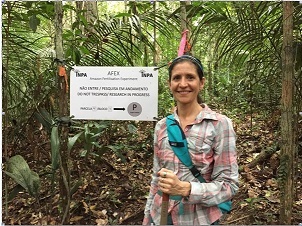Can plantations provide supplementary habitat for wildlife in the face of deforestation?
A case study from India
Agricultural expansion on behalf of tropical forest is the biggest threat to biodiversity in South and Southeast Asia. As more swathes of forested land are being converted into plantations, animal habitat is drastically reduced, hampering the existence of wildlife in the vicinity. As a result, many native species have had to adapt to heavily altered plantation landscapes, treating them as supplementary habitats in order to survive, while also being at the mercy of nearby human populations, and their willingness to coexist with wildlife.
In a recent publication, PhD student Anushka Rege from the Asian School of the Environment (ASE), investigated the efficacy of cashew plantations in India as sites of supplementary habitat for wildlife. She found that, though forests are irreplacable as habitats, plantations can, if well managed, allow or even facilitating wildlife presence. As such, plantations proximal to forests could aid species conservation, provided that successful human-faunal coexistence can be achieved. As it stands, previous studies conducted in coffee and rubber plantations have shown that such plantations are capable of supporting mammalian diversity, although the actual numbers varied according to the plantation's proximity to remaining forest areas, the native vegetation, and the extent of human presence in the area.
"Animals don't perceive protected area boundaries the way we do, and they venture into farms," Anushka says. "So understanding the patterns of their habitat use can help us mitigate negative human wildlife interactions, plan conservation in such landscapes and also ensure that the livelihoods of farmers are not adversely affected."
-and-porcupine-(right)-trapped-on-camera-on-a-cashew-plantation-in-the-study.-photo-credit-anushka-rege-e16d6b7e-5286-400f-b2b4-78999a9a40d7.jpg?Status=Master&sfvrsn=91b907d8_3)
The study, which examines the habitat use by terrestrial mammals in cashew plantations, was conducted in the Tillari region of the Sindhudurg district in Maharashtra, India, which accounts for 41.1% of all land under cashew cultivation in Maharashtra. More importantly, the area is also a part of a global biodiversity hotspot, and encapsulates a large mammal corridor across protected areas such as Kali Tiger Reserve, Mhadei Wildlife Sanctuary and Radhanagari Wildlife Sanctuary.
Using trail cameras, Ms Rege and colleauges showed that out of 11 species found in the forest, 9 were also captured on camera in the plantations. Further, modeling of habitat use for porcupine, sambar, and wild pig showed that understory was an important component for the presence of porcupine and sambar, while wild pig was drawn to human settlements irrespectively. More studies on wildlife in cashew plantations could open up opportunities for conservation in a landscape consisting of a mosaic of forest and agricultural land.
Read the original publication: Mammals Make Use of Cashew Plantations in a Mixed Forest–Cashew Landscape
Read about how the study was conducted and Ms. Rege's fieldwork experiences here
Text by Wong Xin Yi, Sophia Soh Fei Wen, and Anna Lagerstroem














/enri-thumbnails/careeropportunities1f0caf1c-a12d-479c-be7c-3c04e085c617.tmb-mega-menu.jpg?Culture=en&sfvrsn=d7261e3b_1)

/cradle-thumbnails/research-capabilities1516d0ba63aa44f0b4ee77a8c05263b2.tmb-mega-menu.jpg?Culture=en&sfvrsn=1bc94f8_1)

7e6fdc03-9018-4d08-9a98-8a21acbc37ba.tmb-mega-menu.jpg?Culture=en&sfvrsn=7deaf618_1)





